Zur Darstellung nonverbalen Verhaltens in deutschen und schwedischen IRC-Chats. Eine Korpusuntersuchung
DOI:
https://doi.org/10.13092/lo.15.817Abstract
The starting point of this paper is the assumption that communication in chat channels is a special kind of computer-mediated discourse in a written (typed) form but with several qualities of oral communication. The paper includes a description of a corpus, which was created by a longitudinal measurement of five German and three Swedish chat channels during two weeks (5th – 19th February 2001). The analysis focuses on those sequences of the discourse which are marked by asterisks like in German chats: *zwinker *, *mitdenfüßennachderfernbedienungfisch* and in Swedish chats: *skrattar * [lach-1-3.Pers.Sg.+Pl.], *börja stappla iväg mot lindsie*[anfang-INFINITIV geh-INFINITIV zu lindsie]. These sequences, which I call *phrases, are linguistically as well as functionally interesting; in both languages namely, they have a special morpho-syntactical structure and are used to represent nonverbal communication like body language, facial expressions and situations or/and activities which accompany the chat discourse in real life. The paper discusses the different verbal structures of the *phrases as well as their nonverbal functions. Among other things, I show that the German *Phrases mostly represent phonations, gestures and facial expressions; they mostly imitate the oral discourse. In these *phrases, the Swedish chat users very often describe the circumstances of the situation where the chat discourse takes place like activities, real place and surroundings of the real life situation.Downloads
Download data is not yet available.
Downloads
Published
2003-06-30
Issue
Section
Artikel/Articles
License
Copyright (c) 2003 Christiane Pankow

This work is licensed under a Creative Commons Attribution 4.0 International License.
How to Cite
Pankow, C. (2003). Zur Darstellung nonverbalen Verhaltens in deutschen und schwedischen IRC-Chats. Eine Korpusuntersuchung. Linguistik Online, 15(3). https://doi.org/10.13092/lo.15.817


